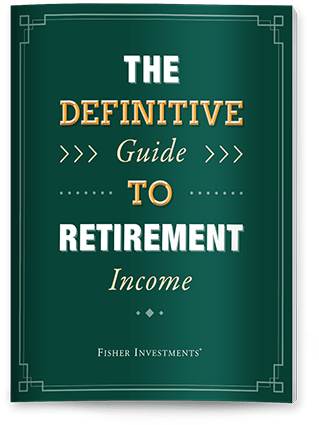Personal Wealth Management / In The News
The Omnibus Trade News Roundup You Need
What to make of the latest whirlwind of trade news.
This article addresses political developments, so please note that MarketMinder favors no politician nor any political party, weighing matters solely for their potential market and/or economic effects.
Whew. President Donald Trump’s August 1 trade-deal deadline is here and, after a hectic week, we now know tariff rates for nearly every US trading partner, as well as some other details worth noting. You may be wondering where things stand, so here is a roundup of the deals made—some of which we already covered in greater detail—along with the latest reciprocal tariffs that will take effect on August 7 (unless trade partners finalize deals to lower their rates). Tariffs, as we have written, are negative—chiefly for the imposing country. But these are proving smaller than feared, with less retaliation than feared—and we are now getting more clarity around what the levels will be globally. All those factors are tailwinds for stocks.
The Deals and Developments We Already Covered (and What We Said About Them)
The UK (May 8)
The UK was first to make a deal with the US, bringing tariffs down from 25% to 10%. See our commentary from then, “The UK and US Ink a Deal (to Maybe Make a Deal Later).”
China (May 12)
China faced some of the highest tariff rates stemming from Liberation Day, which spiraled even higher after it a tit-for-tat retaliatory spat. But the world’s two largest economies agreed to reduce tariffs in May for 90 days while negotiating a broader deal. US tariffs on Chinese goods dropped from 145% to 30%, while China’s retaliatory tariffs fell from 125% to 10%. On July 30, the two sides took steps toward extending that truce, which expires on August 12.
Vietnam (July 2)
Vietnam and the US kicked off last month’s dealmaking with an agreement that reduced tariffs on Vietnamese goods from 46% to 20%. The deal also included penalty rates double this for goods that are transshipped—aiming to tamp down Chinese firms re-exporting through the country—but there are myriad issues with enforcement of that. For more, see our July 10 commentary, "How Markets View the Newest Tariff Deadline and Dealmaking."
Indonesia (July 15), the Philippines (July 22) and Japan (July 23)
Several major Asian nations followed suit in July. Indonesia negotiated a pact lowering US tariffs on its goods from 32% to 19% while the Philippines’ rate rose slightly (from 17% to 19%, though lower than the 20% threatened weeks ago). After many rounds of negotiations, the US and Japan concluded an agreement that reduced the tariff rate from 25% to 15%, including on autos. In exchange, Japan pledged $550 billion in “investment” in the US, though what this actually looks like and how real it turns out to be is a matter of debate. Japanese officials later said only 1% - 2% would be actual investment, with the balance loans. For more on these three agreements, see our July 25 commentary, “This Week in Trade Deals.”
European Union (July 27)
The EU and US made a deal near July’s end that reduced US tariffs on EU goods from 30% to 15%. The EU pledged to buy some $750 billion in energy products from the US, but many analysts question the attainability of that figure as well as the $600 billion in EU investment commitments. For more, see “Market Relief and the EU-US Deal to Make a Deal.”
Brazil (July 31)
Brazil has been the main exception among US trade partners, facing a much higher rate of 50% versus Liberation Day’s 10%. That said, several major Brazilian exports, including iron ore, orange juice and fertilizers, are exempted (sadly, coffee is not).
Alongside the Brazil news, the Trump administration announced it would close the de minimis exemption for all countries, effective August 29—meaning US consumers will have to pay tariffs on their online purchases valued at $800 or less. Separately, a 50% tariff on copper became official, though it came with two big carveouts. The tariff doesn’t “stack” and doesn’t apply to refined copper (only semi-finished products), softening its bite significantly, considering 72% of US imports are refined copper. For more on July 31’s topics, see yesterday’s commentary, “Rounding Up Wednesday’s Tariff Executive Orders.”
Other Trade Deals
Some deals also come with investment commitments. See Pakistan and South Korea. The former reached a deal with the US on July 30, and while specifics are still unknown, the pact will reduce tariffs from the initially imposed rate of 29% and includes an agreement to work together to develop Pakistan’s oil reserves.
Korea’s deal on July 31 lowers its tariff rate from 25% to 15%, putting it in line with the EU and Japan. Moreover, Seoul will make $350 billion in US investments (with $150 billion of that dedicated to American shipbuilding) and purchase $100 billion in liquefied natural gas. All the same caveats applied to Japan’s pledge apply here, too.
What About Those Without a Deal?
Some high-profile trade partners don’t have an agreement with the US. Starting in North America, the US granted Mexico a 90-day extension, delaying a tariff hike from 25% to 30%. That said, a 25% tariff on cars and 50% duty on steel and aluminum remain in place. In contrast, the US hit Canada with a 35% tariff rate, up 10 percentage points from the initial levy imposed in March.
Note, though, the big caveat for America’s neighbors: the US-Mexico-Canada (USMCA) free trade agreement. This remains in effect, meaning US importers can bring in most Mexican and Canadian goods without duties. The upshot: The headline numbers aren’t what most businesses will pay. For instance, experts estimate that Canada’s effective tariff rate would be ~6% - 7%.[i]
Political factors appear to be part of the rationale for higher tariffs for aforementioned Brazil and Canada—as well as some other nations. For example, India’s new tariff is 25%, a bit lower than the 26% rate imposed on Liberation Day, but New Dehli must also pay an “unspecified penalty” tied to its purchases of Russian oil and weapons. Brazil’s tariff hike is based largely on the country’s prosecution of former President Jair Bolsonaro. Canada’s seems influenced by Prime Minister Mark Carney’s announcement the country would recognize a Palestinian state. Taiwan’s 20% tariff is higher than Japan and Korea’s respective 15%, and some observers believe geopolitics is why. Unnamed sources suggest US and Taiwanese negotiators had reached a basic agreement on July 8 but trade talks with mainland China may have complicated concluding Taipei’s deal.[ii]
And on the seemingly arbitrary front, pour one out for Switzerland. Its new 39% tariff is considerably higher than the initially threatened 31% and a bit of a surprise given the apparent progress and optimism on the Swiss side in concluding an agreement. The sticking point appears to be over the trade deficit, particularly pharmaceuticals imports.
For nearly every other nation, the tariff rates set to take effect hew closely to those introduced on those fun placards in April 2’s announcement.
Now, the Trump administration said tariffs will take effect one week from now, so that gives negotiators some time to make a deal. Taking a step back, most US trade is with China, the EU, Canada, Mexico, Japan, the UK and the like, and those levies aren’t as high as threatened on Liberation Day. But they are still much higher than entering 2025—a negative, chiefly for the US. Despite what so many claim, American businesses and households will be the ones who end up paying.
However, for businesses and investors, having these new tariff rates set reduces uncertainty. New taxes on imports aren’t good, but businesses can now at least plan for them. Some will find workarounds, others may choose to pass higher prices on to consumers. But with the rules set in place (at least for now), everyone can move on—something stocks have already started to do.
If you would like to contact the editors responsible for this article, please message MarketMinder directly.
*The content contained in this article represents only the opinions and viewpoints of the Fisher Investments editorial staff.
Get a weekly roundup of our market insights
Sign up for our weekly e-mail newsletter.

See Our Investment Guides
The world of investing can seem like a giant maze. Fisher Investments has developed several informational and educational guides tackling a variety of investing topics.





